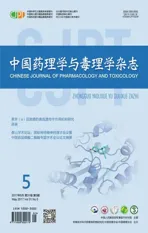2017泰山学术论坛:国际神经精神药理学会议暨中国首届磷酸二酯酶专题学术会议论文摘要
2017-06-052017年6月912日山东泰安
2017年6月9-12日,山东 泰安
2017泰山学术论坛:国际神经精神药理学会议暨中国首届磷酸二酯酶专题学术会议论文摘要
2017年6月9-12日,山东 泰安
主旨报告
P1 Functions of phosphodiesterase isozymes identified by phosphoproteomic analyses
Joseph BEAVO
(University of Washington,Seattle,Washington,USA)
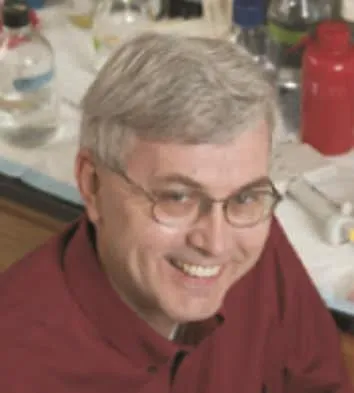
P2 PDE4s and the local regulation of cAMP signaling
Marco CONTI
(Center for Reproductive Sciences and the Eli and Edythe Broad Center for Regeneration Medicine and Stem Cell Research,University of California,San Francisco,USA)

Marco COONNTTII,MD.Fred Gellert Chair in Reproductive Medicine and Biology;Director, Center for Reproductive Sciences;Vice Chair,Department of Obsterics,Gynecology and Reproductive Sciences,University of California,San Francisco.Dr.CONTI received his MD degree from the University of Rome,Italy,in 1974.He was then awarded a Fogarty Fellowship to do further training as a postdoctoral fellow at the National Institutes of Health,Bethesda, MD.Here he investigated the mechanisms of receptor internalization and desensitization under the supervision of Dr.Kevin CATT.When he completed this training in endocrinology,in 1978 he returned to the University of Rome,Italy,as an Assistant Professor in the Institute of Histology and Embryology in the Medical School.Here he continued with his studies on receptor desensi⁃ tization,and initiated his work on phosphodiesterase(PDE)regulation and its role in cell desensitization.As a faculty at the University of Rome,he was promoted first to Associate then full Professor.In 1985,he went on sabbatical to the University of North Carolina at Chapel Hill,first,in the department of Pharmacology,and then in Pediatrics.During this sabbatical,his lab cloned the four members of the PDE4 family of phosphodiesterases.In 1992,he moved as faculty to Stanford University where he remained until 2007 as Professor.At Stanford,his lab published further studies on the properties and regulation of the PDE4 family of proteins.In 2008,he moved to the University of California,San Francisco(UCSF),as Professor and Director of the Center for Reproductive Sciences,a position that he still holds.While at UCSF,he published studies on cAMP signaling and cell cycle regulation as well as research on PDE regulation in cardiac myocytes and immune cells.The major research accomplishments of Dr.CONTI′s research career include the first demonstration of gonadotropin receptor downregulation,and one of the first reports of adenylyl cyclase desensitization.He was also the first to show that the rolipram-sensitive PDE are a heterogeneous group of proteins derived from four genes and that splicing variants add to the complexity of this family of proteins.His lab has made critical observation on the biochemistry of PDE4 including the demonstration that these enzymes are involved,together with PKA,in a feedback mechanism regulating the cAMP signal and the mapping of the functional domains in a PDE4 including the regulatory domain and the dimerization domain.From the functional stand point,genetic studies with KO mice conducted in Dr.CONTI′s laboratory demonstrated for the first time the non-redundant function of PDE in several processes including inflammatory cell activation,excitation contraction coupling in the heart,and defining the subcellular domain of signaling.In the area of reproductive endocrinology, Dr.CONTI has made critical contribution in the field of gonadotropin mechanisms of action and ovulation and oocytephysiology.For these accomplishments,Dr.CONTI has received several recognitions including the International Fogarty Fellowship,the Sandler Award for Asthma Research,the Research Award from the Society for the Study of Reproduction, and the Pioneer Award from the Marine Biology Laboratory/Burrows Welcome.
Abstract:Of the eleven families of cyclic nucleotide phosphodiesterases(PDEs)present in the human body,PDE4s represent the most widely expressed family of PDEs.A large body of work has been published on the expression and function of these PDEs,which preferentially hydrolyze cAMP in all cells studied,including neurons and supporting cells of the CNS.Four distinct genes termed PDE4A, PDE4B,PDE4C and PDE4D encode PDE4 proteins.However,the number of PDE4s identified in different tissues and cells is estimated to be more than 30.Differences in regulation and localization explain this extreme heterogeneity.PDE4 hydrolytic activity is regulated by phosphorylation,and protein kinase A (PKA)was the first kinase identified.This PKA-dependent regulation establishes a feedback loop where cAMP regulates its own degradation to control the intensity and localization of the hormone and neurotransmitter signal.In addition,numerous additional kinases phosphorylate PDE4s to modulate the PKA-dependent activation and fine tune cAMP levels by growth factors and other extracellular cues.Thus,PDE4 can be considered a coincidence detector that integrates multiple signaling path⁃ways.Finally,different PDE4s are involved in numerous macromolecular complexes targeting the cAMP hydrolytic activity to different subcellular domains.Thus,PDE4s function in different subcellular compartments,and inhibition of different isoforms affects cAMP levels in different subdomains with consequently different functions.The dyad space and the control of excitation/contraction will be used as examples of these localized regulations.
Key words:phosphodiesterase 4;cAMP;protein kinase A;phosphorylation
P3 The heat nociceptive mechanism in mechanoheat nociceptors
ZHANG Xu
(Institute of Neuroscience,Shanghai Institutes for Biological Sciences,Chinese Academy of Sciences,Shanghai 200031,China)
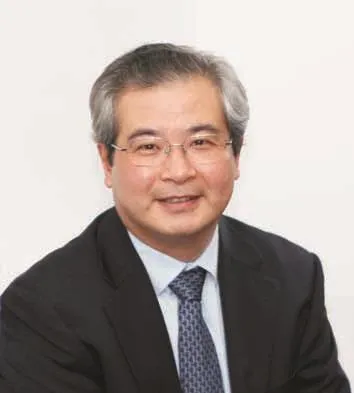
Dr.ZHANG XuNG Xu is a neurobiologist working as a senior principal investigator at the Institute of neuroscience,Shanghai Institutes for Biological Sciences(SIBS),Chinese Academy of Sciences (CAS).He was conferred the Bachelor degree of Medicine from the Fourth Military Medical University(FMMU)in 1985.He received the PhD.in the Department of Neuroscience,Karolinska Institute,in 1994 in Sweden.He was appointed as lecture,associate professor and professor successively at the Institute of Neuroscience,FMMU during 1994-1999.He was recruited as a Professor and Principal Investigator of Laboratory of Sensory System in 1999 by the Institute of Neuroscience,SIBS,CAS.He was elected to be an Academicianof the Chinese Academy of Science in 2015.Now he is the vice president of Shanghai Branch,CAS.Dr.ZHANG′s research is mainly focused on the molecular and cellular mechanisms of neural diseases,such as chronic pain and X-linked intellectual disability.He has found the changes in gene expression patterns of somatosensory ganglia and the spinal cord after nerve injury and inflammation,and several important mechanisms for regulating the functions of neuro⁃peptides,opioid receptors and Na+/K+pump in the nociceptive sensory neurons,which provide theoretical basis for clinical pain treatment and drug discovery.His study also shows that fibroblast growth factor 13(FGF13)stabilizes microtubule to regulate neuronal and brain development,which clarify underlying mechanisms of the mental retardation induced by X-linked FGF13 defect.Dr.ZHANG has published 115 research articles and reviews,and contributed to the Wall and Melzack′s Textbook of Pain.He co-chaired the 9th″International Association for the Study of Pain″Research Symposium and the 4th Asian Pain Symposium.He has given more than 60 lectures at the academic conferences,including a plenary lecture at 9th World Congress of International Brain Research Organization in 2015.He serves as vice presidents of ChineseNeuroscience Society and Chinese Society for Cell Biology,and president of Shanghai Society for Neuroscience.He was honored several awards including the Prize for Science and Technology from Ho Leung Ho Lee Foundation.
Abstract:The current knowledge about heat nociception is mainly confined to the thermosensors including the transient receptor potential cation channel V1 expressed in the nociceptive neurons of dorsal root ganglion(DRG).However,the loss of thermosensors only partially impairs heat nociception, suggesting the existence of undiscovered mechanisms.Using single-cell RNA sequencing andin vivoelectrophysiological recording,we analyzed the transcriptome and functions of DRG neurons.At least six types of mechanoheat nociceptors were identified.However,the molecular network and mechanism responsible for heat nociception in these mechanoheat nociceptors remain to be explored.We found that fibroblast growth factor 13(FGF13)was highly expressed in five types of mechanoheat nociceptors. FGF13 is an intracellular,non-secretory protein,a member of FGF11 subfamily.We found that the loss of FGF13 in the mouse DRG neurons selectively abolished heat nociception.The noxious heat stimuli could not evoke the sustained action potential firing in small DRG neurons from FGF13-deficient mice.Furthermore,FGF13 interacted with sodium channel Nav1.7 at the C-terminal region in a heatfacilitated manner.FGF13 increased Nav1.7 sodium currents and maintained the membrane localization of Nav1.7 during noxious heat stimulation,enabling the sustained firing of action potentials.Disrupting the FGF13/Nav1.7 interaction reduced the heat-evoked action potential firing and nociceptive behavior. Thus,beyond the thermosensors,the FGF13/Nav1.7 complex is essential for sustaining the transmission of noxious heat signals.
Key words:sensory;pain;cell types;brain mapping
P4 Cyclic nucleotide phosphodiesterases as drug targets for neuropsychiatric indications
James M.O′DONNELL
(Department of Pharmaceutical Sciences,School of Pharmacy and Pharmaceutical Sciences,State University of New York at Buffalo,Buffalo,NY,14214,USA)

Dr.O′DONNELLNNELL is dean of School of Pharmacy&Pharmaceutical Sciences at the State University of New York at Buffalo.He is also the professor of Pharmaceutical Sciences,Pharma⁃cology&Toxicology at the State University of New York at Buffalo,and the professor of Behavioral Medicine&Psychiatry at West Virginia University.Dr.O′DONNELL has a longstanding interest and expertise in neuropsychopharmacology.His research over the last 30 years has focused on elucidating the molecular mechanisms of action of CNS drugs and iden⁃tifying novel molecular targets mediating antidepressant,anxiolytic,and memory-enhancing effects on behavior.Now,Dr.O′DONNELL′s research team is interested in exploring the roles of phosphodiesterase(PDE)-mediated cAMP/cGMP signaling in neuropsychiatric and neurodegenerative diseases and developing novel drugs for treating these disorders.He has published more than 100 peerreviewed research articles in high impact journals.His research achievement is also well-documented in his grant appli⁃cations from NIH.In addition to research and research administration,Dr.O′DONNELL is also highly active in other academic activities.He is the chair of the Pathophysiological Basis of Mental Disorders and Addiction study section for NIH and the chair for the 2010 Gordon Research Conference on Cyclic Nucleotide Phosphodiesterases.He also serves as the associate editor for theJournal of Pharmacology and Experimental Therapeuticsand editorial board member or reviewer of 26 peer-reviewed journals.
Abstract:OBJECTIVETo investigate the relationship between the neurochemical and behavioral effects of inhibitors of cyclic nucleotide phosphodiesterases 2(PDE2)and PDE4 in the hope of identifyingpromising therapeutic targets and indications.METHODSDepression-and anxiety-like behaviors were evaluated by forced swimming,tail suspending and elevated plus maze tests.The memory enhancing effects were evaluated by Morris water maze test.RESULTSInhibition of PDE4 results in antidepressant-like and memory-enhancing effects,in part due to increased cyclic AMP signaling. While targeting PDE4 subtypes(PDE4 A-D)pharmacologically has proven challenging due to a highly conserved inhibitor-binding site in the catalytic region of the enzyme,some promise is offered by recently identified negative allosteric modulators of PDE4,which can act in a subtype-specific manner. While PDE2 has not been studied as extensively,it has been shown to be coded for by a single mam⁃malian gene and to be highly expressed in the brain.Its inhibition results in anxiolytic-and antidepres⁃sant-like effects as wells as reducing oxidative stress and affording some degree of neuroprotection; these actions appear to be due to increased cyclic GMP signaling,even though PDE2 catalyzes the hydrolysis of both cyclic AMP and cyclic GMP.CONCLUSIONInhibitors targeting specific family of PDE may exhibit differential pharmacological effects and aid a more efficient pharmacotherapy towards neuropsychological conditions,while drug discovery efforts focusing on PDE2 are not as advanced as those for PDE4,some selective inhibitors are being developed and evaluated.
Key words:phosphodiesterases 4;phosphodiesterases 2;antidepressant;anxiolytic;memory
P5星形胶质细胞Drd2受体通过β -arrestin2抑制NLRP3炎症小体活化
胡刚
(南京中医药大学,江苏南京 210023)
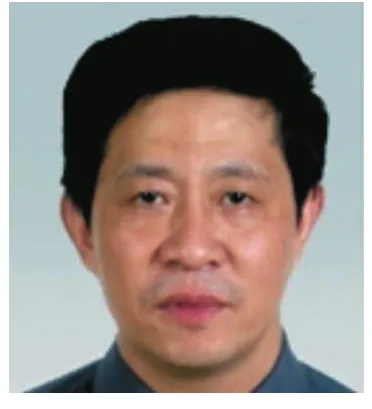
胡 刚,教授,博士生导师,国家杰出青年科学基金获得者。现任南京中医药大学校长,第十二届全国政协委员。1983年毕业于徐州医学院,获医学学士学位;1987年毕业于白求恩医科大学,获医学硕士学位;1992年毕业于中国科学院上海药物研究所,获理学博士学位。1992年至1996年任徐州医学院药理学副教授、教授、教研室主任,1996年至1998年在美国Washington State University高访研修,1999年至2014年为南京医科大学药理学国家重点学科带头人、江苏省神经退行性疾病重点实验室主任、教授、博导。2000年至2003年任南京医科大学基础医学院院长,2003年4月至2014年5月任南京医科大学副校长。期间,2006年4月至2008年6月任泰州市人民政府副市长。2014年4月起任南京中医药大学校长。主要从事神经退行性疾病和脑卒中的病理机制与药物药理学研究,先后主持国家杰出青年科学基金项目、国家重点基础研究发展计划课题、国家重大科技专项、国家自然科学基金重点项目的研究工作,已发表SCI论文100多篇,累计影响因子超过600。目前担任中国学位与研究生教育评估委员会副主任委员、中国药理学会常务理事、全国神经精神药理学专业委员会副主任委员、全国生化与分子药理学专业委员会副主任委员、全国中药与天然药物药理学专业委员会副主任委员、SCI刊物CNS Neurosci Ther副主编、Clin Exp Physiol Pharmacol和Acta Pharmacol Sin等杂志编委。
帕金森病(PD)的主要病理特征为黑质致密部多巴胺(DA)能神经元进行性丢失,并伴有α-突触核蛋白(α-syn)沉积和神经炎症。前期研究发现,星形胶质细胞多巴胺D2受体(D2R)具有抑制神经炎症作用,近年来又发现D2R可以通过激活接头蛋白β-arrestin2(arrb2)相关而非cAMP依赖的非经典通路调控细胞功能。因此,揭示D2R对α-syn诱导的神经炎症的影响及其arrb2在星形胶质细胞D2R抗炎效应中的作用具有重要的科学意义。应用Drd2敲除(Drd2-/-)、arrb2敲除(arrb2-/-)和突变型α-syn转基因(A53Ttg/tg)小鼠的研究发现,不同D2R激动剂(quinpirole,quinelorane,bromocriptine)均可浓度依赖性地抑制LPS+ATP,LPS+ MSU和LPS+Nigericin等方式诱导的星形胶质细胞NLRP3炎症小体的激活,但对α-syn诱导的炎症则无效。进一步研究发现,D2R激动剂促进arrb2与NLRP3分子直接结合,减少ASC与NLRP3的结合,进而抑制NLRP3炎症小体激活;arrb2敲除则取消了D2R激动剂抑制NLRP3炎症小体活化和保护DA神经元的作用。研究表明,α-Syn通过干扰星形胶质细胞arrb2与炎性分子的相互作用,从而取消了D2R激动剂的抑炎效应。上述结果从全新的角度阐明了α-syn干扰β-arrestin 2分子的抑炎功能、阻断D2R激动剂的作用通路,为诠释晚期PD患者应用D2R激动剂无效提供了直接的理论依据。此外,本研究揭示了选择性激活arrb2偏爱的信号转导在PD抗炎治疗和神经保护中的重要意义,为PD临床治疗学的突破提供了新的思路。
星形胶质细胞;D2受体;β-arrestin2;NLRP3炎症小体;帕金森病
P6 A new perspective for research of depression:the membrane stability of glutamate receptors and its regulation
CHEN Jian-guo1,2
(1.Department of Pharmacology,School of Basic Medicine,Tongji Medical College,Huazhong University of Science and Technology,Wuhan 430030,China;2.The Key Laboratory for Drug Target Researches and Pharmacodynamic Evaluation of Hubei Province, Wuhan 430030,China)

陈建国,博士,博士生导师,二级教授,华中科技大学同济医学院药理学系主任。教育部长江学者计划特聘教授、国家杰出青年基金获得者、国家973项目首席科学家、学校“华中学者˙领军岗”特聘教授,教育部科技创新团队负责人。现任华中科技大学副校长、同济医学院院长。1995-2001年期间先后在(德国)凯撒斯劳腾大学和海德堡大学学习并获得博士学位、在(美国)爱荷华大学做博士后研究,2002年回国工作至今。长期从事药理学教学与科研工作,研究方向为神经精神药理学,主要从事抑郁症、药物成瘾和衰老相关认知障碍的发生机制及药物干预的研究。现任中国药理学会副理事长、中华医学会常务理事、湖北省药理学会理事长。国家精品课程《药理学》负责人。先后承担有国家新药创制重大专项、国家自然科学基金重点项目、科技部国际合作项目、国家973计划项目等重大重点项目,在Nature,Nature Neuroscience,Neuron,Biological Psychiatry,Molecular Psychiatry等国内外权威期刊发表文章100多篇。获得湖北省自然科学一等奖、二等奖,中国侨联创新人才贡献奖,宝钢优秀教师奖等奖励。
Abstract:OBJECTIVEMajor depressive disorder(MDD)is a common mental illness,which shows serious dysfunction in emotion,motivation and cognition.The imbalance of monoamine neurotransmitter is the classic pathogenesis of depression,but more and more evidence indicates that glutamatergic transmission may be the key factor leading to the occurrence of depression.However,the role of the membrane expression and regulation of glutamate receptors in the development of depression has not been elucidated.To address this issue,we have done series of experiments.METHODSDifferent methods and techniques,such as behavior,morphology,molecular biology and electrophysiology, were applied to investigate the impact of glutamate receptors and their subunits in the regulation of synaptic plasticity and the mechanism in depressive animal models.RESULTSChronic social defeat stress(CSDS)can induce depressive behaviors in wildtype(WT)mice but not caspase-1 knockout (KO)mice.Further experiments showed that,in WT mice,CSDS induced a significant decrease in the membrane expression levels of the GluR1 and GluR2 subunits of AMPA receptors,the amplitudes of mEPSC in hippocampal CA1,meanwhile the long-term potentiation(LTP)at hippocampus SC-CA1 pathway was also impaired.Oppositely,this CSDS-induced reduction of the membrane expression of AMPA receptors was prevented by the knockout of caspase-1 or caspase-1 inhibitor,in which the expression of GluA1 and GluA2 were upregulated from(60.2±3.4)%and(63.9±3.7)%to(120.1±5.9)% and(112.6±9.6)%,respectively,while the total protein level of AMPA receptor subunits were not affected. On the other hand,a chronic intracerebroventricular injection of IL-1β,a downstream signal molecule of caspase-1,could induce depression-and anxiety-like behaviors in caspase-1 KO mice.CONCLUSIONThe caspase-1 can mediate the stress-induced depression-like behaviors by down-regulation of themembrane expression of AMPA receptors in hippocampus,the inhibition or knock-out of caspase-1 can increase the expression of AMPA receptors in the membrane,thus reversing the depression-like behavior.Caspase-1 may serve as new target for depression therapy.
Key words:depression;glutamate receptor;synaptic plasticity
P7 Modulation of abnormal neuronal circuit in temporal lobe epilepsy
WANG Yi,XU Ceng-lin,CHEN Zhong
(Department of Pharmacology,Key Laboratory of Medical Neurobiology of the Ministry of Health of China,College of Pharmaceutical Sciences,Zhejiang University,Hangzhou,China)
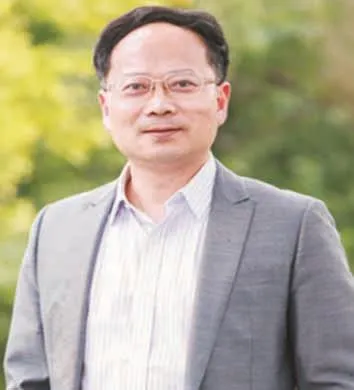
PProf.CHEN Zhhoonngg,PhD.,Principal Investigator,Cheung Kong Scholar&Professor of Ministry of Education of P.R.China,Distinguished Professors of NSF of China.Vice Dean of School of Medicine,Department of Pharmacology,College of Pharmaceutical Sciences.Director of Epilepsia Center,the Second Affiliated Hospital,Vice Director of Ministry of Health Key Lab of Neurobiology.Dr.CHEN got his PhD.from the Department of Pharmacology,Okayama University,Japan.He was trained as a visiting scientist in Tohoku University,University of Pennsylvania and University of Toronto.In 1999,Dr.CHEN established his lab in Department of Pharmacology,School of Basic Medicine,Zhejiang University,and he was promoted as Professor in 2002.The topic study of Dr.CHEN′s lab mainly focus on two fields in neuropharmacology:①neural circuits basis&molecular mechanisms of epileptic pathogenesis and the development of antiepileptic drugs.② the roles of histamine and histamine receptors in ischemic cerebral injury and the involvement of autophagy.He has published over 160 SCI papers,includingNature Commun,Nature Neurosci,Angew Chem Int Edit,Autophagy,ect.
Abstract:OBJECTIVETemporal lobe epilepsy(TLE)is one of the most common types of human epilepsy,and they are often resistant to current treatments.METHODSBy using optogenetic,electro⁃physiological,imaging and pharmacology strategies,we aimed toinvestigate the underlying circuit mechanism of TLE and tried to developthe novel and efficient approach to control epilepsy.RESULTS(1)Deep brain stimulation,especially low frequency stimulation,targeted the epileptic focus and the areas outside of the focus(critical regions for seizure spread),such as entorhinal cortex or subiculum, reduced seizure severity in TLE.Its anti-epileptic effect is time-window dependent and polarity dependent, which shows a promising strategy for treating epileptic seizures.(2)Using an optogenetic strategy,we demonstrated that excitatory projection from entorhinal cortex to hippocampus instructs the brain-stimu⁃lation treatments of epilepsy.(3)Our data from both the clinical and experimental studies further demonstrated that a disinhibitory GABAergic neuron-mediated microcircuit in the subiculum contributes to secondary generalized seizures in TLE.(4)Finally,based on abnormal synchronization of the electrical activity in epileptic circuit,we developed electro-responsive hydrogel nanoparticles modified with angiopep-2 to facilitate the delivery of the antiepileptic drug phenytoin sodium,which greatly improves the therapeutic index.CONCLUSIONOur findings may update the current view of epileptic neuronal networks and suggest possible promising ways for epilepsy treatment.
Key words:epilepsy;neural circuits;brain stimulation;optogenetics;electro-responsive
AVO EAVO received his Bachelor of Sciences Degree at Stetson University in Deland Florida.He then went on to complete his PhD.in Physiology at Vanderbilt University in Nash⁃ville,Tennessee where he worked with Drs.Earl SUTHERLAND and Joel HARDMAN.He then did postdoctoral training with Dr.Edwin G.KREBS at the University of California at Davis.In 1977,he moved to the Department of Pharmacology at the University of Washington,in Seattle, WA.where he rose through the ranks to Full Professor.Currently he is a Professor Emeritus, at the University of Washington.Dr.BEAVO has established a well-recognized and funded research program in the area of cyclic nucleotide signaling,focusing on the family of enzymes called cyclic nucleotide phosphodiesterases(PDEs)that degrade the cyclic nucleotides,cAMP and cGMP.These studies have included the initial characterization and isolation or cloning of many of the PDEs that are known today.Current studies are directed largely at developing methods to determine what functions are subserved by individual PDE isozymes.To date,he has more than 190 publications in peer reviewed journals.He has served on the editorial boards of several journals including theJournal of Biological Chemistryand theProceedings of the National Academy of Science(USA).He was a recipient of an American Heart Association Established Investigator Award and is a member of the National Academy of Sciences,USA.
We now know that 11 different families of cyclic nucleotide phosphodiesterases(PDEs)are expressed in mammalian species.Most of these families contain multiple gene products and most of the genes utilize alternative splicing or alternative start sites to encode more than one RNA/protein. However,specific functions for these different PDEs have not yet been identified in most cell types despite the fact that selective inhibitors to most of the PDE families are available.Conventional approaches to study PDE function typically rely on measurements of global cAMP,or general increases in cAMP-dependent protein kinase A(PKA),or exchange protein activated by cAMP(EPAC)activity. Although newer approaches utilizing subcellularly-targeted FRET reporter sensors have helped to define more compartmentalized regulation of cAMP,PKA,and EPAC,they have limited ability to link this regulation to downstream effector molecules and biological functions.To address this problem,we have begun to use an unbiased,mass spectrometry-based approach coupled with treatment using PDE isozyme-selective inhibitors to characterize the phosphoproteomes of the″functional pools″of cAMP that are regulated by specific cAMP-PDEs(the PDE-regulated phosphoproteomes).In MA-10 Leydig cells we find that in order to detect appreciable increased in either phosphorylation or steroid production,one needs to inhibit both PDE 4 and PDE 8 activity.Using this combination of inhibitors,we find large PDE inhibitor-induced changes in many different proteins that modulate steroid traffickingand biosynthesis.The data are consistent with the idea that cAMP serves to coordinate hormone stim⁃ulation of steroid production by altering the phosphorylation of many different proteins at multiple points in the overall pathway rather than just controlling a single rate limiting step.It seems quite likely that many of the proteins phosphorylated in this cell type in response to PDE inhibition,will also be regulated by cAMP in many other cell types.Similarly,in Jurkat cells we find multiple,distinct,PDE regulated phosphoproteomes that differ in response to different PDE inhibitors.Here we also find that little phos⁃phorylation occurs unless at least 2 different PDEs are concurrently inhibited in these cells.Inhibition of a single PDE produces little effect.Bioinformatics analyses of these phosphoproteomes suggest differing functional roles,mechanisms of action,and synergistic relationships among the different PDEs that coordinate cAMP-signaling cascades in these cells.In this tissue also,the data strongly imply that phosphorylation of many different substrates contribute to cAMP-dependent regulation of these cells.Overall,the findings illustrate that the approach of using selective,inhibitor-dependent phospho⁃proteome analysis can provide a generalized methodology for understanding the roles of different PDEs in the regulation of cyclic nucleotide signaling.
phosphodiesterase;phosphoproteome;cAMP;signaling
The project supported by National Natural Science Foundation of China(91332202, 81630098)
